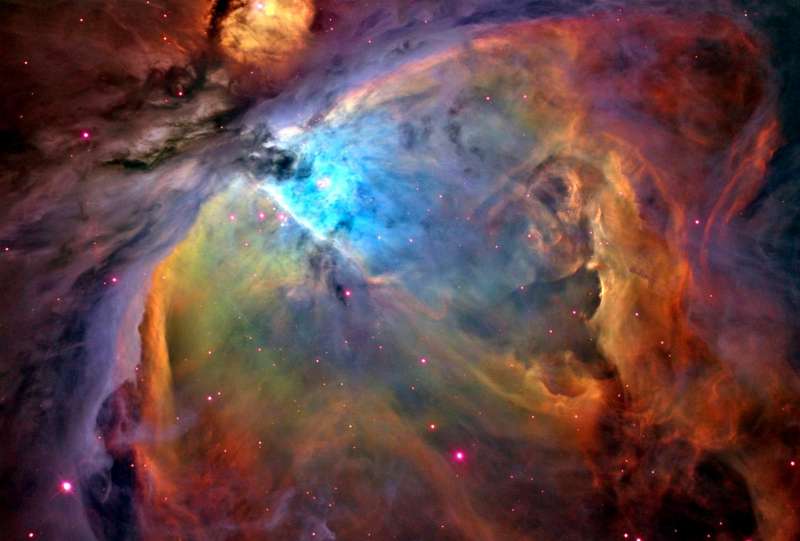Where Did Life Come From?
by Eric Lyons, M.Min.
From an atheist’s perspective, the question of life’s origin is a “big mystery” at best. Since nature has shown continually for thousands of years that all physical life comes from previously existing life (a recognized scientific law known as biogenesis), a naturalistic explanation of how life supposedly evolved from non-life is extremely problematic. Stuart Clark recently revisited this conundrum in a series of articles in New Scientist regarding Earth’s “biggest mysteries.” Clark titled one article simply, “Where Did Life Come From?” (2008, 199[2675]:30-31). Consider some of his admissions.
“Leaving aside the remote possibility that life arrived on Earth on a meteorite from somewhere else,” Clark first acknowledged, “we have to assume that it emerged from whatever physical and chemical conditions existed in the planet’s youth” (p. 30, emp. added). Clark admitted in the opening line of his article that the evolutionary explanation of life must be assumed. Such a confession is reminiscent of what one of the world’s foremost origin-of-life experts admitted in a lecture series titled Origins of Life. Dr. Robert Hazen, a member of the International Society for the Study of the Origin of Life, acknowledged from the outset: “This course focuses exclusively on the scientific approach to the question of life’s origins. In this lecture series, I make an assumption that life emerged from basic raw materials” (2005, 1:6, emp. added). The fact is, the best that evolutionary science can do with the question of life’s origin is to assume it was purely naturalistic.
Second, Clark admitted: “There are no recorded instances of an ‘origin-of-life’ event on modern Earth” (p. 30). Even though evolutionists have no problem teaching impressionable students in science classes throughout the world that life arose from chemicals billions of years ago, they must admit, as did Mr. Clark, that science has no evidence (i.e., “there are no recorded instances”) that physical life ever came from non-life (which would violate the law of biogenesis). The best Clark could do was question whether “the right conditions” still exist, or conjecture whether “it is happening on such tiny scales that we have not noticed” (p. 30, emp. added).
As he continued stumbling through his answer to one of Earth’s “biggest mysteries,” Clark acknowledged “another difficulty” (p. 31). “[W]e are faced with a chicken-and-egg situation: for DNA to do its thing it needs proteins, yet the blueprints for those proteins are provided by the DNA. So which came first? The most likely answer is now thought to be that they evolved at the same time through a network of reactions between simpler chemicals” (p. 31, emp. added). Unbelievable! Not only have evolutionary scientists never observed life evolving from non-life, but they acknowledge that such a suggestion means that DNA and proteins must have evolved and come together at exactly the same time. Supposedly, such precise timing of the necessary building blocks of life all happened purely by chance, and without any kind of intelligence. As the British astronomer Sir Frederick Hoyle wrote 27 years prior to Stuart Clark in the same science journal, such calculation is “nonsense of a high order” (1981, 92:527).
So where did life come from? According to evolutionist and Nobel laureate George Wald, “The only alternative” to spontaneous generation is “to believe in a single primary act of supernatural creation. There is no third position” (Wald, 1954, 191[2]:46). Life was either created, or it evolved from non-life. Since every scientific observation known to man has demonstrated that physical life never comes from non-life, and cannot do so, the only logical conclusion is that life was created supernaturally.
Truly, life’s origin is mysterious only if one refuses to recognize the implications of the scientific law of biogenesis. Science, Scripture, and common sense demand a supernatural explanation.
REFERENCES
Clark, Stuart (2008), “Where Did Life Come From?,” New Scientist, 199[2675]:30-31, September 27.
Hazen, Robert (2005), Origins of Life (Chantilly, VA: The Teaching Company).
Hoyle, Fred (1981), “The Big Bang in Astronomy,” New Scientist, 92:521-527, November 19.
Wald, George (1954), “The Origin of Life,” Scientific American, 191[2]:44-53, August.






